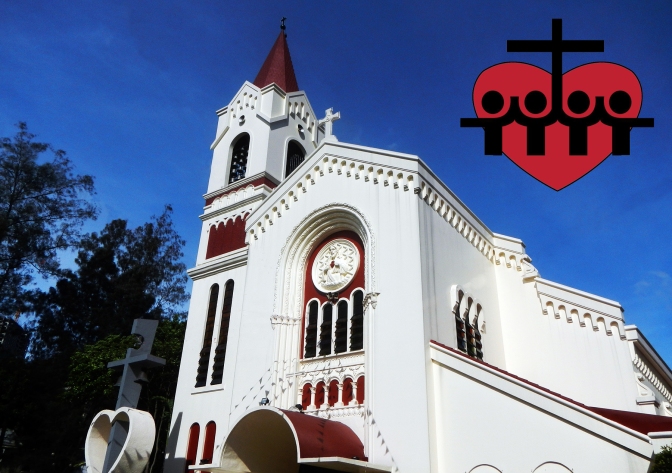
Since the establishment of Barangay Laging Handa in 1964, the whole community would not have its own parish until the establishment of the Saint Paul: The Apostle Parish in 1978. Before this, the residents would attend masses at the Sacred Heart of Jesus Parish at the lot between First Class Scout Rogelio Celis Ybardolaza Street (formerly South H Street), Scoutmaster Librado L. S. Fernandez Street(formerly South 8 Street), and First Class Scout Felix Palma Fuentebella, Jr. Street (formerly South 9 Street), with the Blessed Sacraments administered by the priests of the Society of the Divine Word (SVD, or Societas Verbi Divini) from the nearby Divine Word Mission Seminary.

When the Congregation of the Religious of the Virgin Mary (RVM, La Cofradía de Hermanas de Religiosa de la Virgen María) opened the Saint Mary’s College of Quezon City, at the corner of Cebu Avenue (now Mother Ignacia del Espíritu Santo Juco Avenue) and Senior Scout Pathfinder Filamér Santos Reyes (formerly South C Street), the residents attended masses at the school’s auditorium, with the sacraments administered by the priests from Missionaries of the Sacred Heart of Jesus (MSC, Missionarii Sacratissimi Cordis) from the MSC Provincial Superior House (est. 1917), in New Manila.
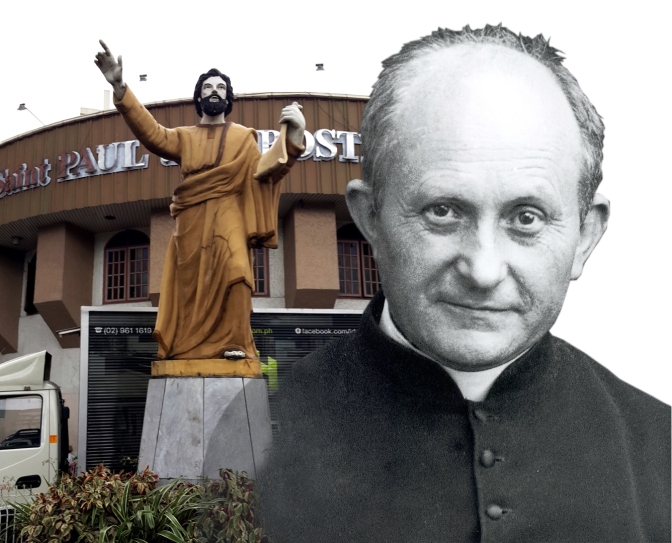
By 1978, the residents demanded for a new parish grew and a small chapel was erected along First Class Scout José Fermín Gonzales Magbanua Street, and it was declared as a parish by 1980. And by 1983, the new church began construction at the corner of Mother Ignacia Avenue and Star Scout Romeo Rafaél Rallos streets, and completed in 1986. The new parish church was named after the Roman Saint Paul (born Saul of Tarsus, died 67 AD), based on the SVD’s founder the Dutch Saint Arnold Janssen (1837-1909) use of St. Paul’s teachings as he wrote his Devotio Moderna.
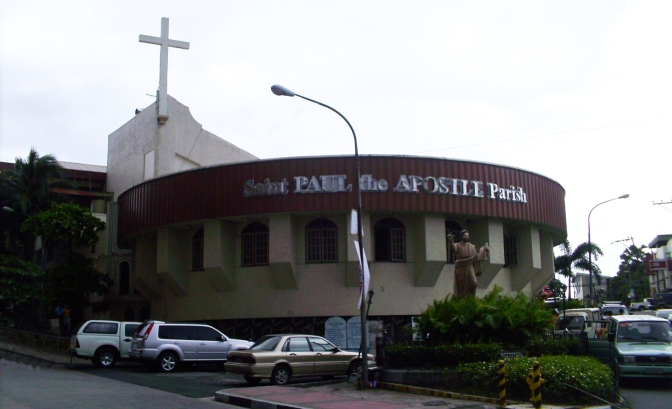
There are no more records of the architect of the Saint Paul: The Apostle Parish, but it is still a wonder of Philippine modernist architecture. Although a truly modern church architecture started in 1956, with the Church of the Holy Sacrifice at the University of the Philippines, the majority late 20th Century parishes still resembled classical church architecture, hence making the Saint Paul: The Apostle Parish stand out.
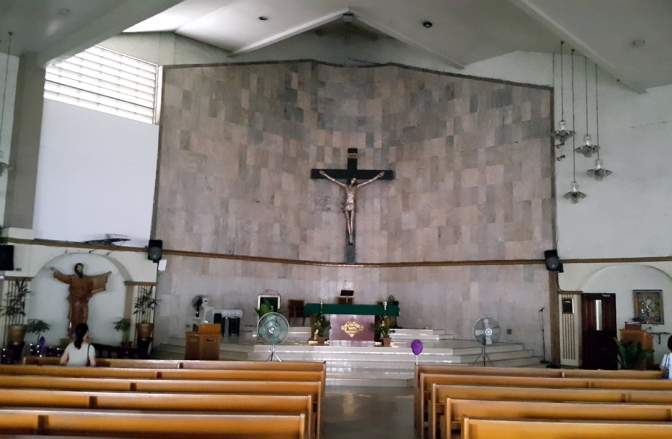
And over the decades, the parish priests and parishioners have refrained from adding carved wooden Baroque fixtures, such as what has been done to many modernist churches. When visiting the Saint Paul: The Apostle Parish these days, the church looks similar to how it was when it opened in 1986. The only noticeable additions to the church are the statue of St. Paul at the entrance, the golden image of the “Lamb of God” on the altar table, and the mural of “Jesus Christ at the River Jordan” at the baptistery.
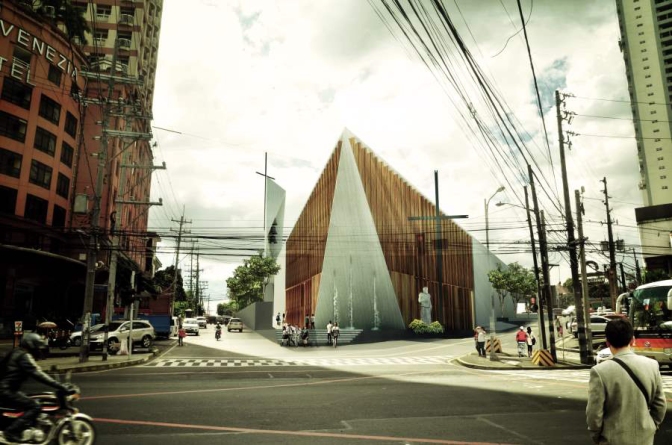
However by 2017, the plans to change the whole structure of the Saint Paul: The Apostle Parish started. This project is led by HANDS (Habúlan and Ngo Design Studio), and the future plans are to expand the church to accommodate the growing population of the area.
Despite the radical change of the future Saint Paul: The Apostle Parish, it will still stand as a symbol of both the faith and or modernist Philippine architecture for generations.




Great post 😁
LikeLike
The building used to be a night spot.. It then became a folk house, Spindle, which transferred from its old site along Banawe St.
LikeLike
The structure was a restaurant before, fish fun. Most of the structure form was retained, changing mainly the interior.
LikeLike
Fortunately, the demolition/re-construction of the St. Paul the Apostle Parish didn’t push through because of the strong advocacy of some parishioners against this plan. Fortunately as well, we were blessed with three succeeding Parish Priests/Administrator, who includes the current one, who wisely opted to preserve the structure and in fact worked for significant renovations and improvements. We would have become ‘ground zero’ if the demolition job succeeded, in the midst of the almost 3 year long CoViD pandemic. How can the church hierarchy justify raising funds to support a senseless demolition while thousands upon thousands of Filipinos lose their job or are going hungry?
The concerned parishioners also managed to secure a structural assessment report from the QC Building Division which attested to the soundness and robustness of the church structure, including a Parish Center annex which was built by a previous Parish Priest.
The SPAP structure ought to be preserved and eventually be recognised as a historical heritage by the National Historical Commission (the original circular structure with its massive walls was, I believe was built sometime early 1970’s as Fish Fun Restaurant of the Lucas Family of Malabon).
LikeLike
That is good to know, as I love the old architecture design
LikeLike